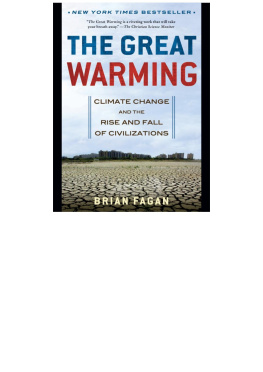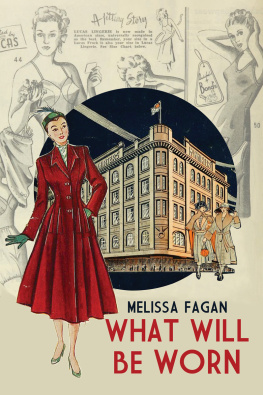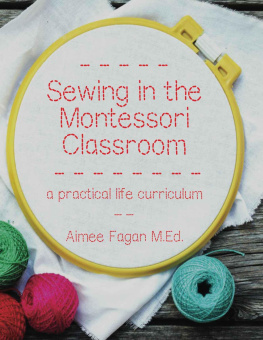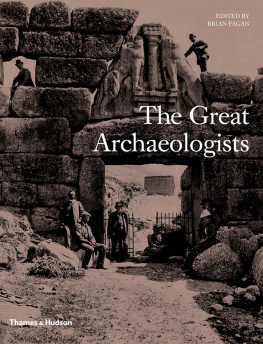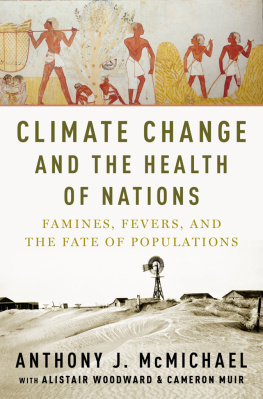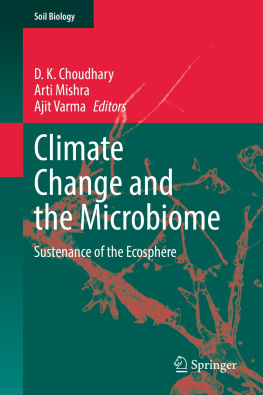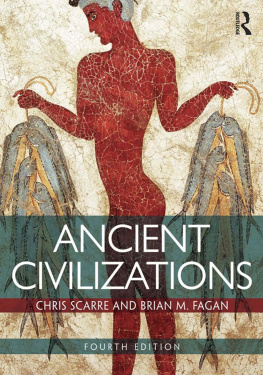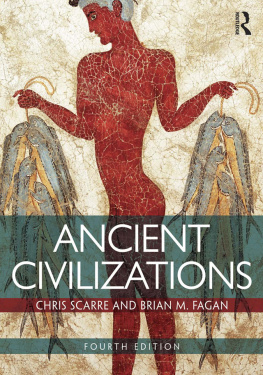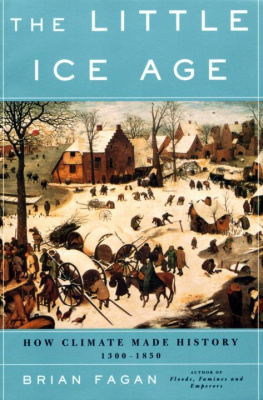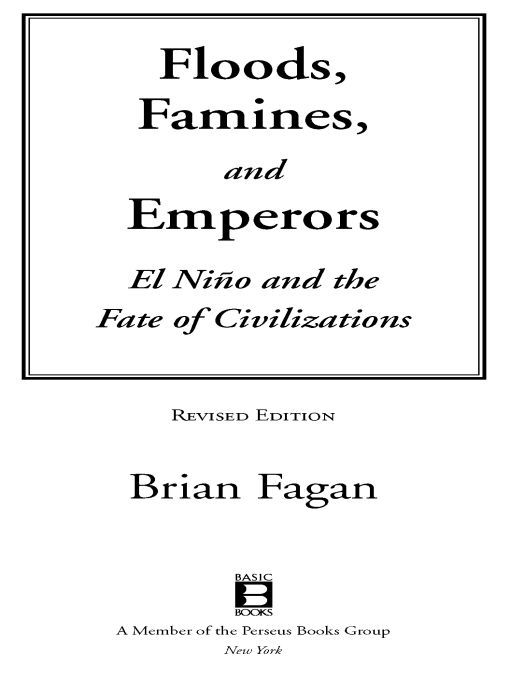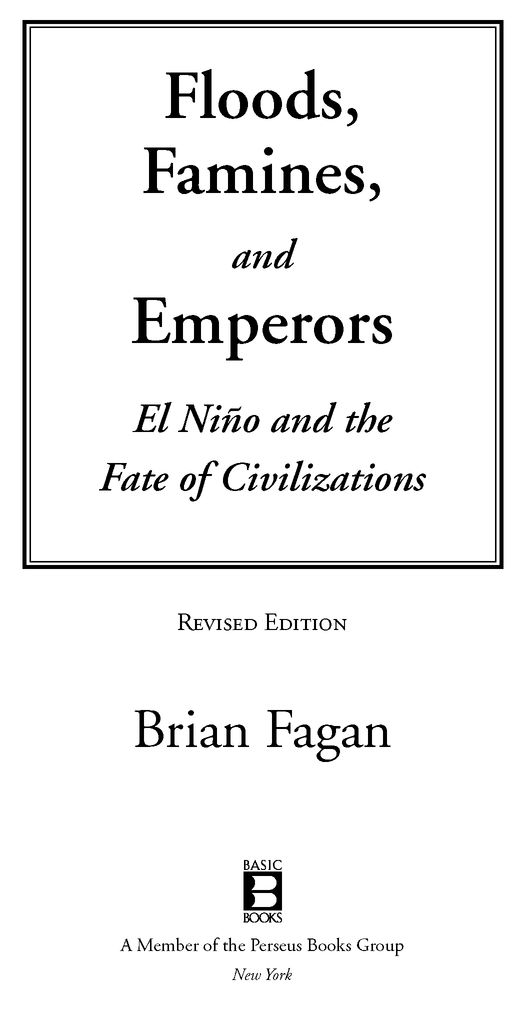Table of Contents
Also by Brian Fagan
The Great Warming
Fish on Friday
Chaco Canyon
The Long Summer
The Little Ice Age
From Black Land to Fifth Sun
Eyewitness to Discovery (editor)
Oxford Companion to Archaeology (editor)
Time Detectives
Kingdoms of Jade, Kingdoms of Gold
Ancient North America
The Journey from Eden
The Great Journey
The Adventure of Archaeology
The Aztecs
Clash of Cultures
Return to Babylon
Elusive Treasure
The Rape of the Nile
For Lesley
When I see you coming my heart beats
harder and I reach for your hand...
Or if you prefer: light blue touch paperand stand clear
Authors Note
All measurements in this book are given in metric units. Dates are given in years before the present or in years A.D./B.C., following the most commonly used convention. All radiocarbon dates after 6000 B.C. have been calibrated with tree-ring chronologies.
Nonsailors should note that wind directions are described, following common maritime convention, by the direction they are coming from. A westerly or west wind blows from the west, and northeast trade winds from the northeast. It is surprising how many people are unaware of this common usage! Ocean currents, however, are described by the direction they are flowing toward. Thus, a westerly wind and a westerly current flow in opposite directions.
Place-names are spelled according to the most common usages. Archaeological sites are spelled as they appear most commonly in the academic literature.
Preface
The whole earth is the sepulcher of famous men; and their story is not
graven only on stone over their native earth, but lives on far away,
without visible symbol, woven into the stuff of other mens lives.
For you now it remains to rival what they have done.
Thucydides, The Funeral Oration of Pericles
The damage wrought in California in 1997-1998 was not as severe as the winter storms of 1995 and 1997, but it was bad enough. We learned about the impending great El Nio long before it arrived. Satellites and computer models showed us a rapidly swelling blob of warm wateralways red, like a pustulein the western Pacific moving eastward along the equator. We were mesmerized by this expanding lesion on the earth and bombarded with predictions of approaching doom. Time, Newsweek, and newspapers around the world ran features on coming droughts, floods, and severe storms. The World Wide Web buzzed with dire warnings; California politicians orchestrated carefully stage-managed conferences to discuss preparations for disaster relief. It was the year El Nio became a household word and a social phenomenon. Blame it on El Nio became a nightclub joke in California.
The apocalypse came late to the West Coast. Day after day we basked in crisp autumn sunshine, the Pacific like glass, winds calm, the temperature neither too hot nor too cold. We began to laugh at the scientists forecasts of record rainfall and record ocean temperatures. The fall rains came on time and were beautifully spaced. Thanksgiving and Christmas passed with clear skies and gentle breezes. Stories of hundred-year rains in Peru, of floods that swept away entire streets of the city of Trujillo, were received with smug detachment. El Nio, we told one another, had given us a miss.
Then the January and February rains arrived. Roiling southeasterly storms descended on the California coast. Hurricane-force gusts battered San Francisco Bay and closed the Golden Gate to commercial shipping. Just south of the city, the cliffs at Pacifica melted, sweeping houses to their doom. The Russian River rose so far above flood stage that parts of the small town of Guerneville were evacuated. Mud slides cascaded down on hillside cabins and homes at the hamlet of Rio Nido. Families lost everything in minutes.
Storm after storm blew onto the waterlogged coast. A ferocious downpour in the mountains behind Ventura in southern California sent a flash flood rushing down the river west of the city. Within minutes the floodwaters rose over the main link between Los Angeles and San Francisco, drowning cars and blocking Freeway 101 for eighteen hours. Hundreds of motorists spent the night in their cars waiting for the waters to recede. The same flood swept away the Southern Pacific railroad trestle immediately downstream. Ten days passed before coastal rail service resumed.
California had always paid a high price for unpredictable El Nios. Fourteen years earlier, when another strong El Nio also brought strong winds and intense rainfall (as did a weaker event in 1993), floodwaters and landslides caused nearly one billion dollars worth of damage between Orange County and San Diego. The saturated earth buckled side-walks and broke concrete swimming pools like eggshells. Tornadoes and waterspouts twisted across the coast, and eight people died.
The 1998 El Nio, the greatest in living memory, brought record rains to the California coast: nearly 1,270 millimeters in Santa Barbara, almost three times its yearly average. But because federal, state, and local governments had spent millions clearing flood-control channels, stockpiling sandbags, and taking other precautions, the damage was less than anticipated. It was the first time the authorities had the benefit of accurate long-range weather forecasts that predicted the onslaught. Computer models and satellite images tracked the great El Nio from birth to death. Although thousands more of us lived in low-lying coastal zones, we escaped catastrophic damage because we were at least partially ready. Everyone with access to a TV set was well aware of the impending storms.
Elsewhere in the tropical world, the 1997-1998 event caused well over ten billion dollars in damage. Severe droughts hit Australia and Southeast Asia. Millions of hectares of rain forest went up in smoke in Indonesia and Mexico. More than 1.8 million people in northeastern Brazil received famine relief. As in every climatic disaster, the poor suffered most, especially those living in marginal environments and in countries without the resources to prepare for drought or flood or to pay for relief and reconstruction.
Ten years have passed since the last great El Nio, and no one knows when the next one will develop. But history tells us that it is certain to arrive, probably sooner rather than later.
Spanish colonists in Peru of four centuries ago were the first to write about El Nios. They called them aos de abundancia, years of plenty and heavy rainfall. Ocean water temperatures rose sharply. Exotic tropical fish appeared off the coast. Vegetation bloomed in the normally arid desert. All this bounty came about because a warm countercurrent, called El Nio, the Christmas Child, occasionally flowed southward along the Pacific coast, bringing torrential rains and exotic sea life. El Nio still brings heavy rains to Peru, and tropical fish to the nearby sea, but people now dread its ravages. Population growth has turned small farming villages into mushrooming cities where slums and shantytowns crowd onto river floodplains. A strong El Nio now sweeps away bridges, houses, and roads and kills hundreds of people, leaving hunger in its wake. The coastal economy takes heavy losses as anchovy catches plummet and fresh guano production slows dramatically. All of us, and especially the poor, are vulnerable to the Christmas Child and other short-term climatic changes as never before.


